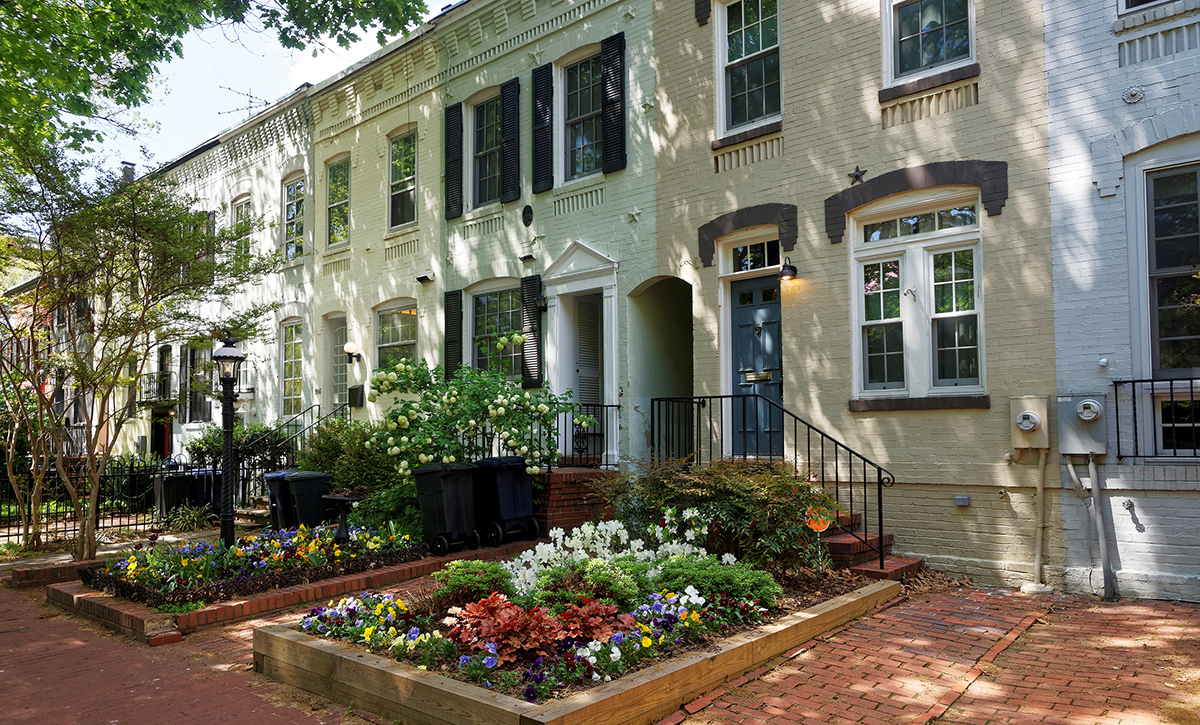Williams: Welcome to D.C. — Publicly Progressive, Privately Guarding Its Privilege
D.C. embraces the fairest, most progressive policies in the U.S. while protecting a housing market that’s driving out low-income residents of color

Help fund stories like this. Donate now!
This summer will mark 15 years since I moved to Washington, D.C. Spending that much time in a place makes a person reflective — given the way Maryland commuters drive around here, my bike and I may not have too many more years left.
How to explain the District? When friends elsewhere ask about my adopted hometown, I often tell them that, for better and worse, “Washington, D.C. is a Very Serious Town for Very Serious People Thinking About Very Serious Things.” Forget the sinister fictions you’ve seen on political TV dramas, ignore the vacuous rhetoric of candidates demagoguing against the federal government they’re purportedly campaigning to lead — this is a town that runs on dopey, earnest, civic-minded faith in public service, public debate, the public sector … in the public.
But it’s also a city like many others in the United States: a hub of consolidating well-paying jobs and economic power inexorably pulling in waves of privileged newcomers. Here, as in New York, Seattle, Austin, San Francisco and Oakland and so many other places, new housing construction isn’t keeping pace, so there’s a corresponding undertow displacing longstanding residents from the city. Between its persistently hot housing market and an almost universally unaffordable child care ecosystem, D.C. is muddling towards a future where an upper-middle-class income may become a prerequisite for any family trying to live — and stay — in the city.
That’s D.C. in 2022: a town of goodhearted progressives strung tightly between their broadminded public philosophy on the one hand, and the increasingly taut pressures shaping families’ private lives on the other.
Recent polling from researchers at SocialSphere puts some data on these musings. Compared with respondents from nine other states included in the poll (and the national average), D.C. residents were the most politically engaged, the most attuned to national politics and the most likely to identify as progressive. They were more likely to respond favorably when asked about Dr. Anthony Fauci, director of the National Institute of Allergy and Infectious Diseases, and local D.C. public health officials.
They were the most likely to view U.S. public schools as good or excellent and to have favorable views of local school officials. They were second most likely to respond favorably about local teachers (behind Missouri). They were — by far — the most likely to approve of a hypothetical proposal to overhaul school funding to send more resources to schools serving low-income children and children of color.
Basically: even amid the tumult of American politics in our current era, my D.C. neighbors have retained their solid faith in public institutions. When asked about the pandemic’s impact on kids, fully 52% of D.C. respondents said that kids were “disadvantaged” in the short term, but were likely to catch up over time. Again, this result was the most optimistic in the poll, compared with any of the nine states included.
And yet, it’s hard to square this talk with the path the city’s walking. New housing construction lags demand — particularly denser and/or affordable units. Efforts to address this almost always face opposition from mostly privileged homeowners. The hot housing market sustains racial and socioeconomic segregation in the city. According to a school segregation measurement tool from the Urban Institute, the demographics of a single school, Deal Middle School, which is the primary middle school school serving D.C’s. wealthy enclaves west of Rock Creek Park, produce nearly 16% of citywide racial school segregation. By congregating a large segment of D.C.’s white (and largely rich) families in its enrollment, Deal makes the rest of the city much more segregated.
How is this possible? How does a family get into Deal? It’s simple! They buy a house in one of the neighborhoods that have guaranteed by-right access to the elementary schools that feed directly into Deal. Except that the median price for a three-bedroom, single-family home in these particular neighborhoods was north of $800,000 way back in 2015, before the pandemic supercharged the D.C. housing market. So, unsurprisingly, a quick search on real estate site Redfin reveals that the current median price of a three-bedroom home in-boundary for Deal is $1.2 million.
So, of course, these neighborhoods’ corresponding elementary schools — disproportionately white and gilded campuses like Janney (contributing to 4.1% of D.C.’s school segregation), Lafayette (4%), Murch (2.6%) and Hearst (1.1%) — all add to the problem. Affordable housing is almost nonexistent near these troves of privilege.
That’s us, D.C.: bleeding hearts and sharp elbows. A city increasingly dominated by a crowd of relatively privileged crusaders working to make the world fairer, better, safer, cleaner … while also fighting to retain our ability to sustain and transmit our advantages to our kids. We’ll do nigh on anything to make our city more open, fair, progressive, and tolerant — decriminalizing various drugs, implementing paid family leave, pushing for more bike lanes, etc. — so long as it doesn’t meaningfully influence our ability to buy access to predominantly white and wealthy neighborhoods and schools. Yes, we drift along, trying optional tweaks at the edges of our school enrollment policies to make them just a little fairer, a little less reflective of the massive current of gentrification shifting the demographics of the city.
It almost seems like a cruel joke: in 20 years, D.C. may well have the fairest, most progressive, most equitable public policy systems in the United States … and will have displaced most of its communities of color and low-income residents who might have benefitted from those.
Help fund stories like this. Donate now!

;)
